Australia is home to some truly amazing parrots. From mysterious birds only seen in closely guarded secret places to phantom parrots that show up here and there and then disappear without a trace. Beautiful, colourful, and certainly unique; this article will introduce you to 9 of the 17 parrots endemic to Australia.
1. Australian King Parrot
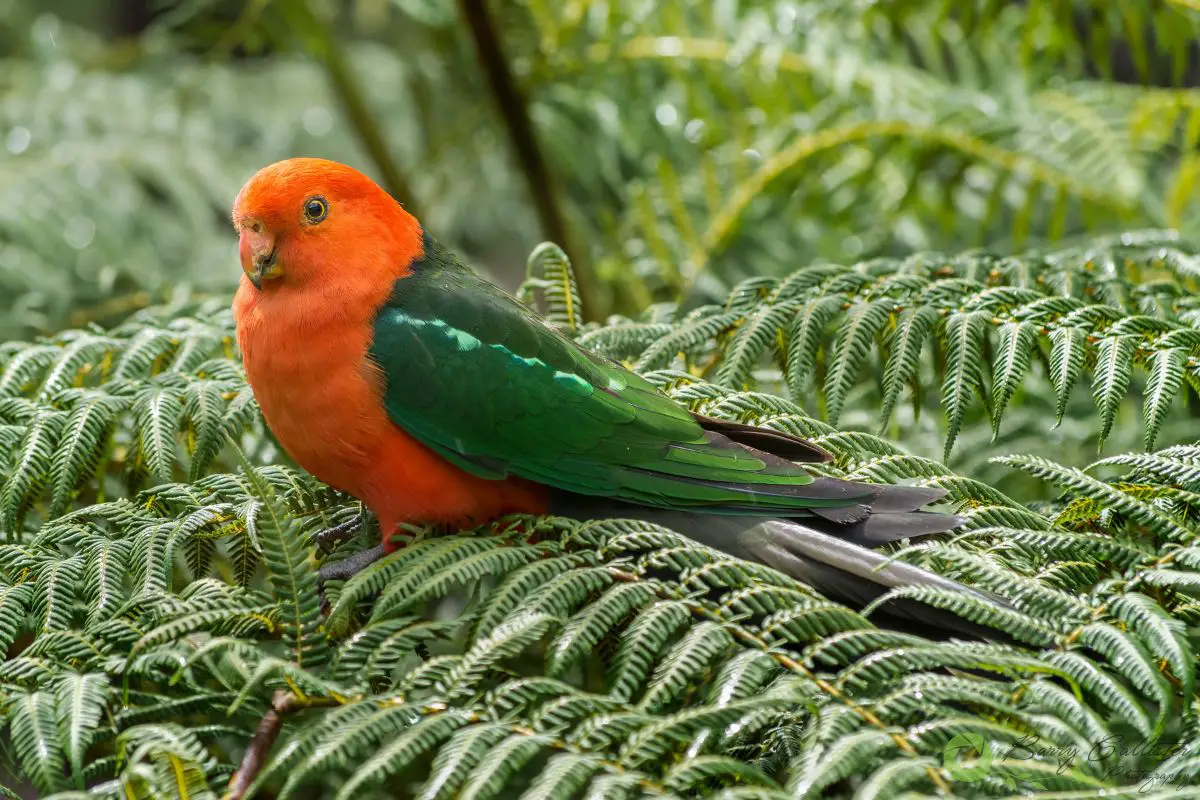
Size
The Australian King Parrot is around 43 cm (17 in.) in length.
Colour
The only Australian parrot with a completely red head, the males also have a red chest and belly. Their wings are dark and emerald green with patches of lighter green and their tails are dark green.
The females have green heads and chests, and red bellies.
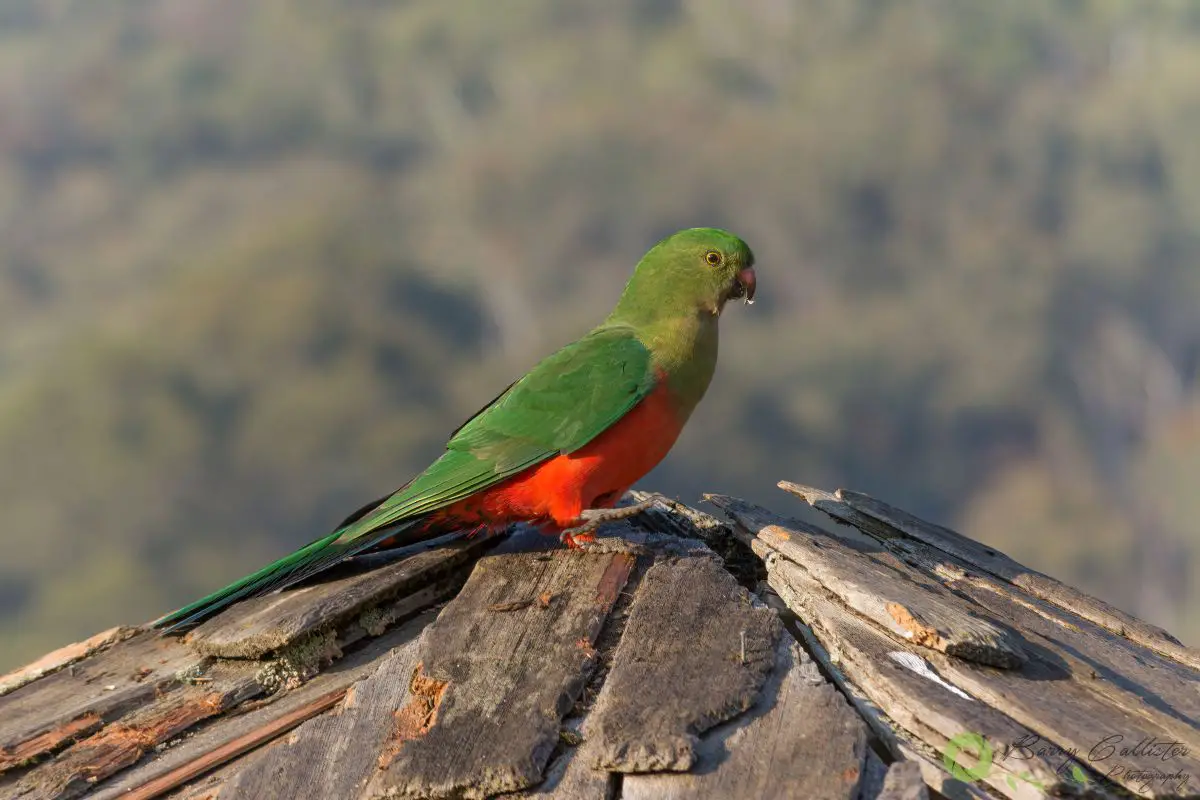
Other Names
Green-winged Parrot or its Latin name Alisterus scapularis.
Where To Find Them
King Parrots can be found along the east coast and ranges in the red areas marked on the map below:
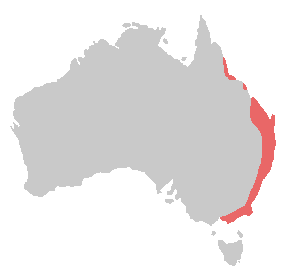
Where To Look For Them
They prefer humid and heavily forested areas such as Eucalyptus woods either in or near subtropical and temperate rainforests.
Look for them feeding on fruits or seeds either on the ground or in the trees.
What Do They Sound Like?
Listen to some of the amazing calls of the Australian King Parrot below:
Australian King Parrot Facts/Anecdotes
This stunning and cheeky bird is one I have a lot of experience with. Soon after moving into our old home in Gembrook, Victoria in 2006, a male King Parrot attempted to enter the open front door?! We believe it may have been fed by the previous owners.
These lovely birds were the most regular visitors to our bird feeder and garden. Their funniest habit was landing on the guttering of our home, screeching and peering down at us as if to say “where’s the seed?”
One particular male would also come and perch right outside our dining room window and peer in through the glass until we brought seed out to the feeder.
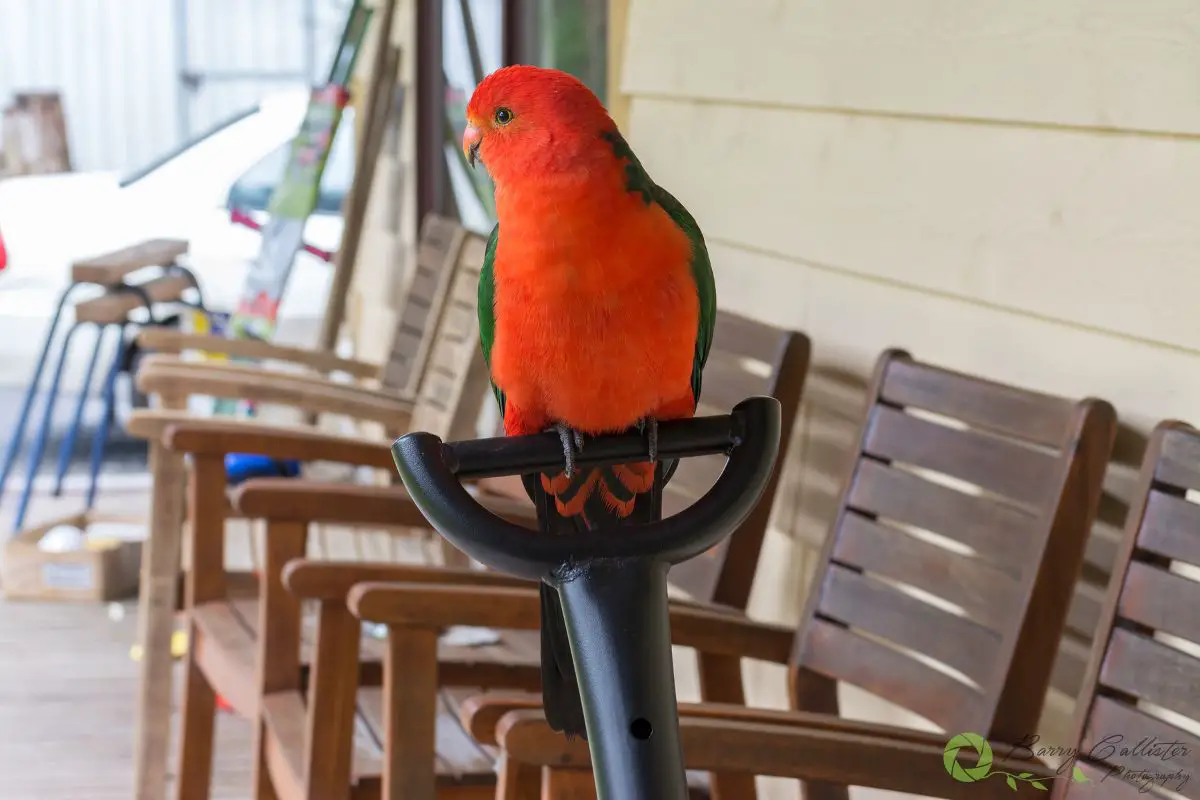
2. Blue-winged Parrot

Size
Blue-winged Parrots are around 20 – 24 cm (7.9 – 9.4 in.) in length.
Colour
They have an olive-green head and upper body, yellow underparts, and a signature blue patch on the edge of the wing. Their tails are green-blue with yellow sides. Females are similar to males but with more faded colouring.
Other Names
Also known as the Blue-banded Parrot; the Grass Parrot; the Blue-banded or Hobart Grass-Parrot; and the Blue-banded or Blue-winged Grass-Parakeet. Their Latin name is Neophema chrysostoma.
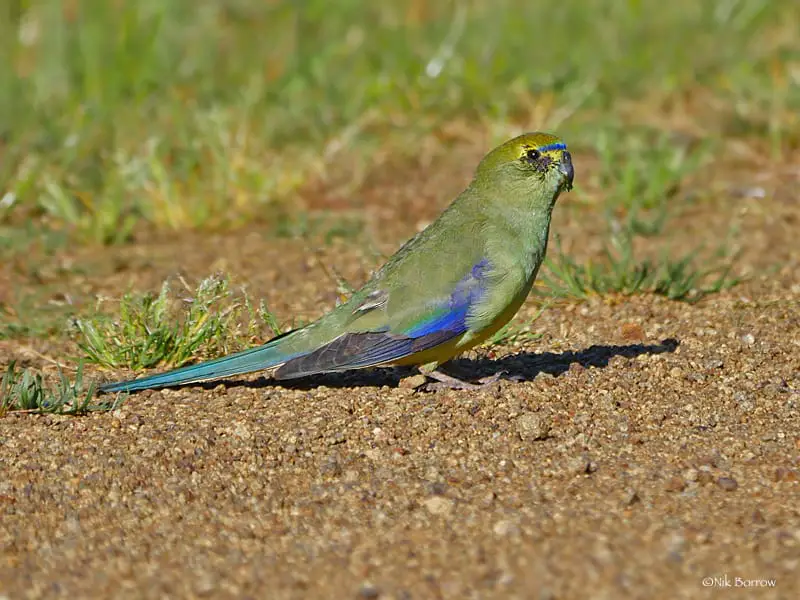
Where To Find Them
These colourful creatures are found mainly in Tasmania and southern Victoria. They are also found sporadically in western New South Wales, eastern South Australia, southwest Queensland, and the Northern Territory.
Blue-winged Parrots can be found along the Great Ocean Road, Victoria’s most famous scenic drive running from Geelong to Warnambool. If you are lucky enough, you may even spot them in the bushland at Wilson’s Promontory National Park, the southern tip of the Australian mainland.
Discover Australia’s smallest bird in this post right here on my blog.
Where To Look For Them
You will find Blue-winged Parrots in many different habitats from coastal, sub-coastal, and inland areas, to semi-arid environments. You may also find them at airfields, golf courses, or paddocks.
Look for them foraging on the ground for grass seeds.
What Do They Sound Like?
The call of the Blue-winged Parrot is unique, a kind of high-pitched trill sound:
Blue-winged Parrot Facts/Anecdotes
Green Rosellas will often join Blue-winged Parrots while drinking or bathing. In a post from Birds In Tasmania from February 2021, the author describes seeing this happen frequently.
The author of that article seemed to think it may be because Blue-winged Parrots are so alert to everything going on around them. They may act as an alarm system for the Green Rosellas.
3. Eastern Ground Parrot

Size
Eastern Ground Parrots are up to 30 cm (11.8 in.) in length.
Colour
Perfectly camouflaged for grassland, the Eastern Ground Parrot is bright grass-green with black and yellow markings all over its body. They have a pale yellow bar on their wings and their tails are also barred with yellow. Across their lower forehead, they have a band of red.
The image below of a taxidermied bird shows their colouring well:
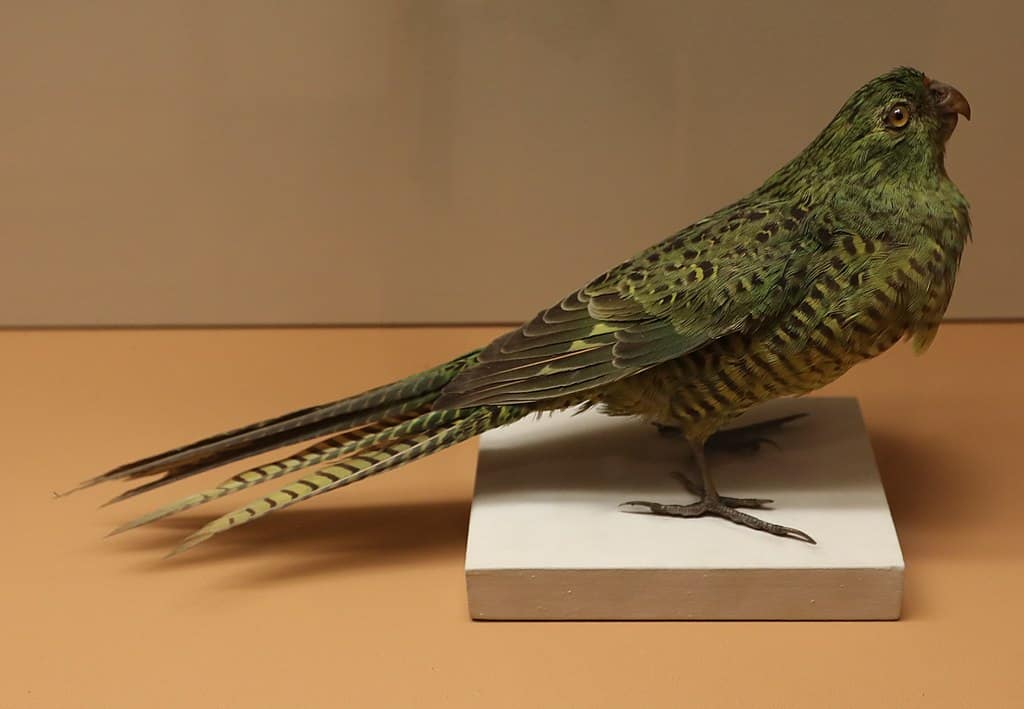
Other Names
The Eastern Ground Parrot is sometimes simply called the Ground Parrot. Its Latin name is Pezoporus wallicus.
Where To Find Them
You will find these birds in coastal areas in Australia’s east. From southeast Queensland to northeast and southern New South Wales. You may also see them in coastal areas of Gippsland in Victoria as well as on islands in Bass Strait and in the state of Tasmania.
Where To Look For Them
These are rare parrots indeed. Eastern ground parrots are only seen if they are flushed out from the cover of vegetation. They spend most of their time feeding on fallen seeds they pick from the ground or low shrubs.
They prefer heathland, sedgeland, or button-grass plains.

What Do They Sound Like?
The call of the Eastern Ground Parrot is like some high-tech bomb about to explode:
Eastern Ground Parrot Facts/Anecdotes
The Eastern Ground Parrot is one of only 5 ground-dwelling parrots in the world.
There are estimated to be around 4000 eastern ground parrots left in the wild.
Learn about the amazing flightless birds of Australia in this article here on the blog.
4. Elegant Parrot
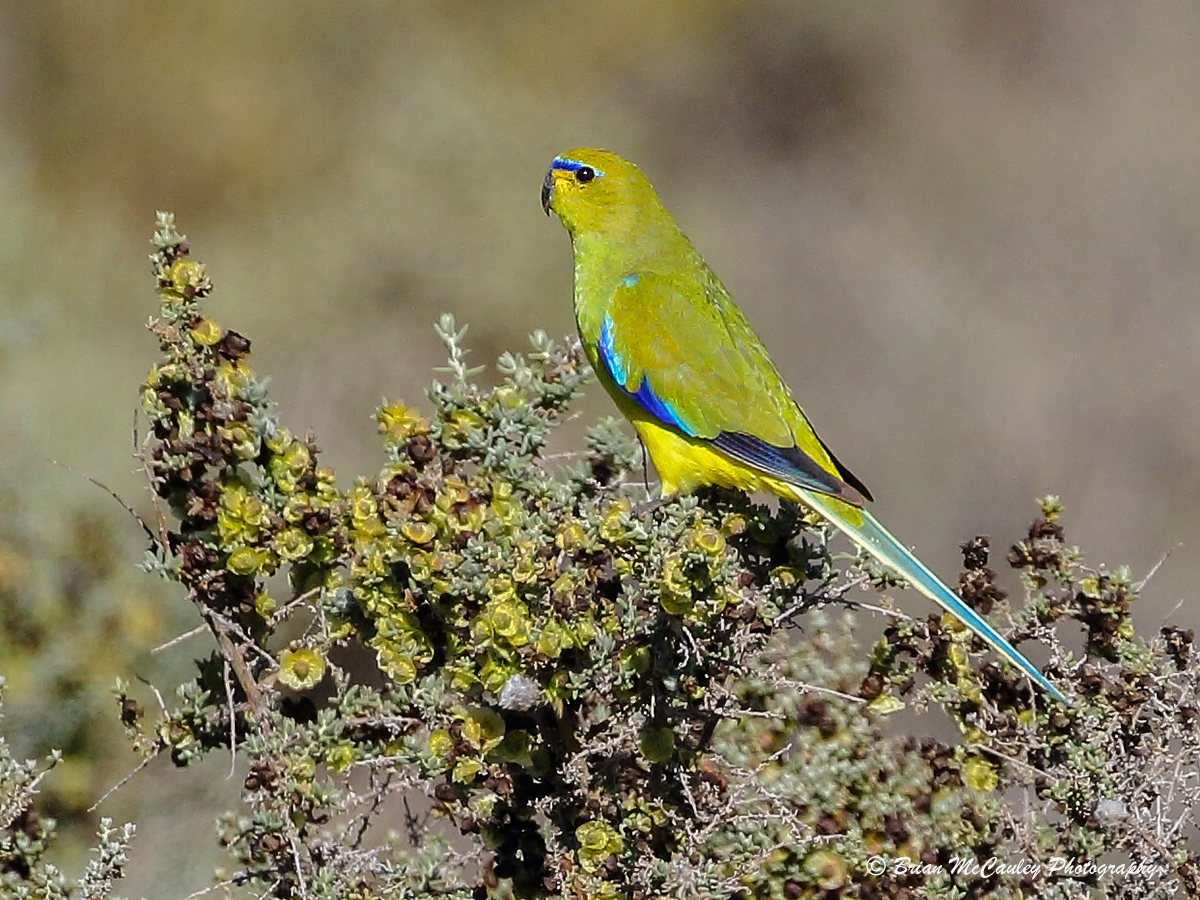
Size
Elegant parrots are around 23 cm (9.1 in.) in length.
Colour
It’s easy to see where this bird got its name. The Elegant Parrot is stunning with golden-olive upper parts, a yellow belly and rump, and vibrant two-toned blue patches on the wings. It also has a yellow face with a two-tone blue band across the beak and between the eyes.
Even the tail of this bird is stunning; blue above with yellow edges and all yellow underneath.

Other Names
Elegant Parrots have also been called Elegant Parakeets, Elegant Grass Parakeets, and Grass Parrots. Their Latin name is Neophema elegans.
Where To Find Them
The map below shows where this colourful parrot can be seen:

Where To Look For Them
Elegant Parrots prefer grasslands, shrublands, mallee, woodlands, bluebush plains, heathlands, saltmarsh, and farmland.
These birds can often be found hanging about with the Blue-winged Parrots from earlier in this article. They feed on the ground, taking seeds of grasses and shrubs.
What Do They Sound Like?
Listen to the calls of the elegant parrot below:
Elegant Parrot Facts/Anecdotes
When scared into flight, Elegant Parrots will fly in a zig-zag pattern, sometimes landing again a short distance away. Other times, they will fly to great heights until they are lost from sight.
Discover more Australian parrots in this post here on my blog.
5. Superb Parrot
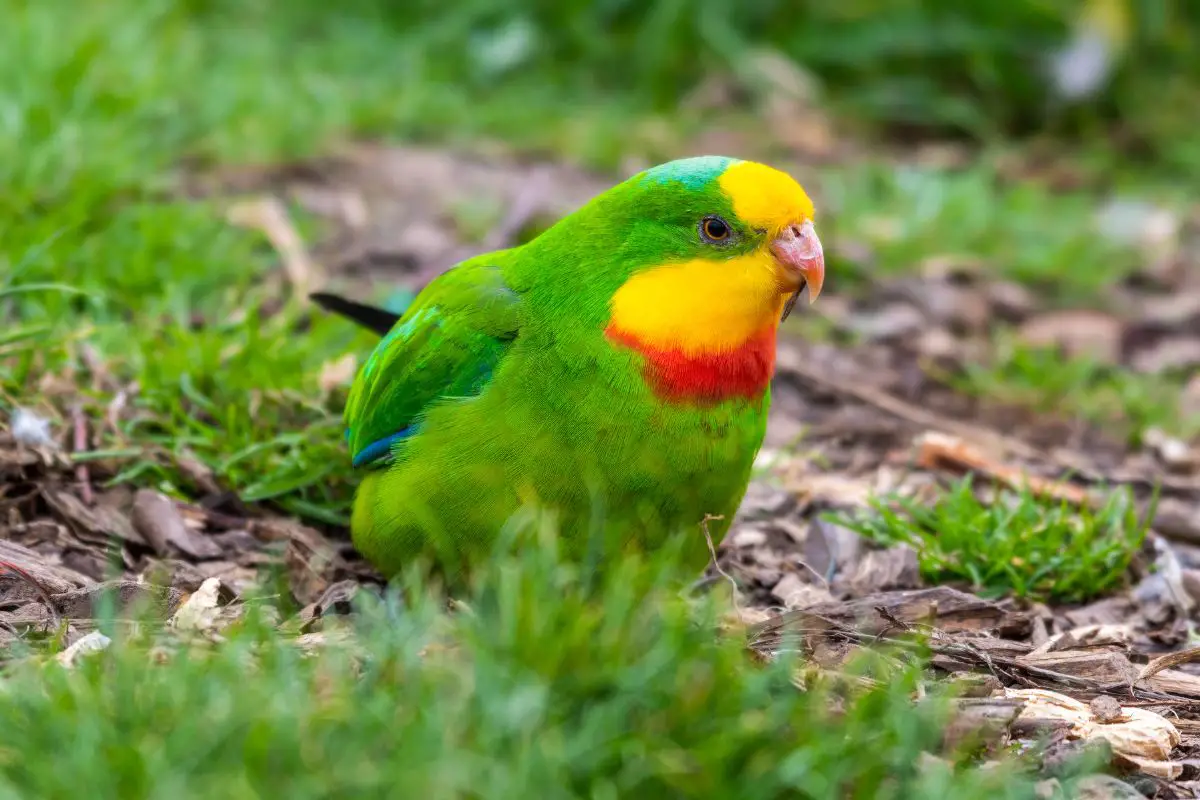
Size
This vibrant parrot is around 40 cm (16 in.) long.
Colour
Superb? Yes, it is…
A beautiful bright green bird. The males have brilliant yellow patches on the crown of the head and the bib (below the beak) and a red patch just below the bib.
The female is duller in colour with red thighs and patches of pink on the inner sides of her tail feathers. Both the male and female have a red iris and pink beak.
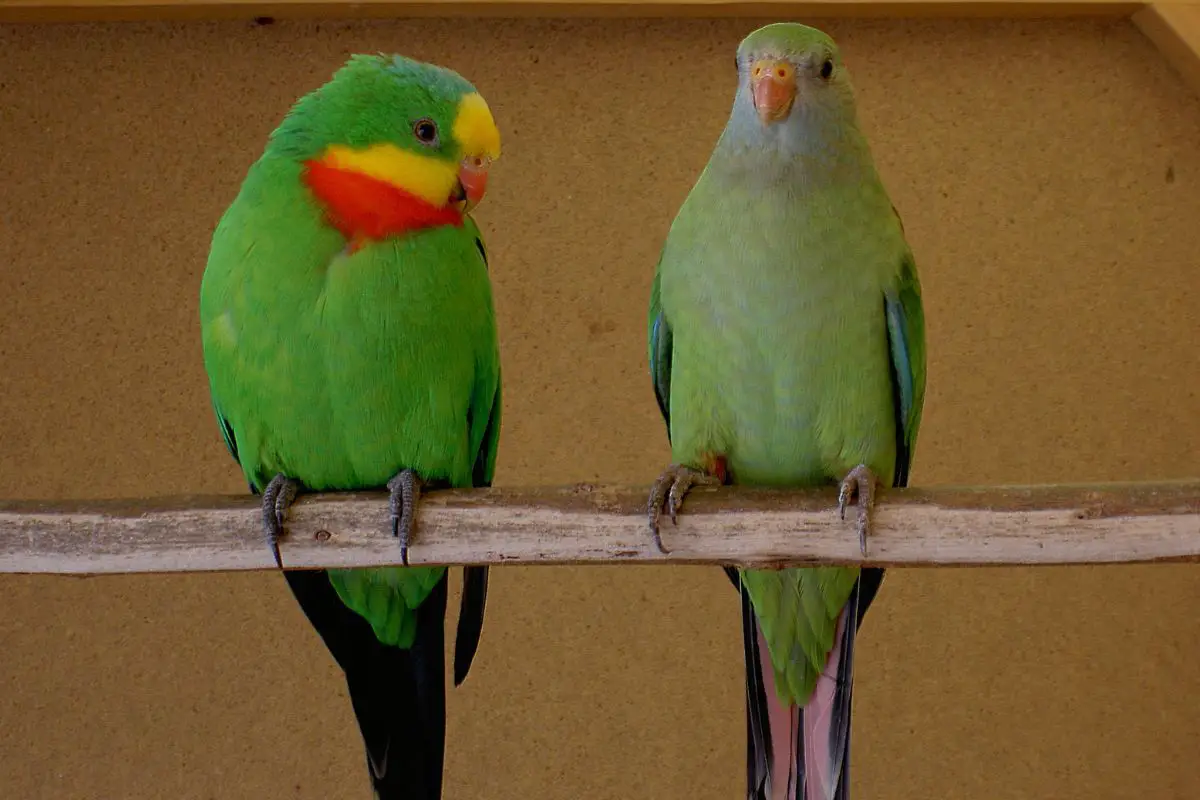
Other Names
These birds are often called the Barraband, Scarlet-breasted Parrot, or Green Leek. Their Latin name is Polytelis swainsonii.
Where To Find Them
If you want to view this bird in the wild you will have to go to the Riverina area of New South Wales and Victoria. In winter they fly north as high as northern New South Wales.
Where To Look For Them
Superb Parrots feed on the ground and in the trees as they eat seeds, fruits, berries, nectar, flowers, and insects. Look for them in Eucalypts as they love the nectar from their flowers.

What Do They Sound Like?
Press play on these sound files to hear the incredible calls of the Superb Parrot:
Superb Parrot Facts/Anecdotes
Superb Parrots are extremely fussy about their nesting sites. They use hollows of only certain eucalyptus species and only trees that have various hollows which suit their needs.
Research shows that this limits them to about one in 200 available nesting sites. This leaves this already vulnerable species at further threat as tree clearing depletes their available option for nesting sites.
6. Western Ground Parrot

Size
The Western Ground Parrot is between 13.5 and 14.5 cm (5.3 to 5.7 in.) long.
Colour
A close relative of the Eastern Ground Parrot, the Western species is similar in colour. Bright green with yellow-and-black streaks and a bright red band above its beak.
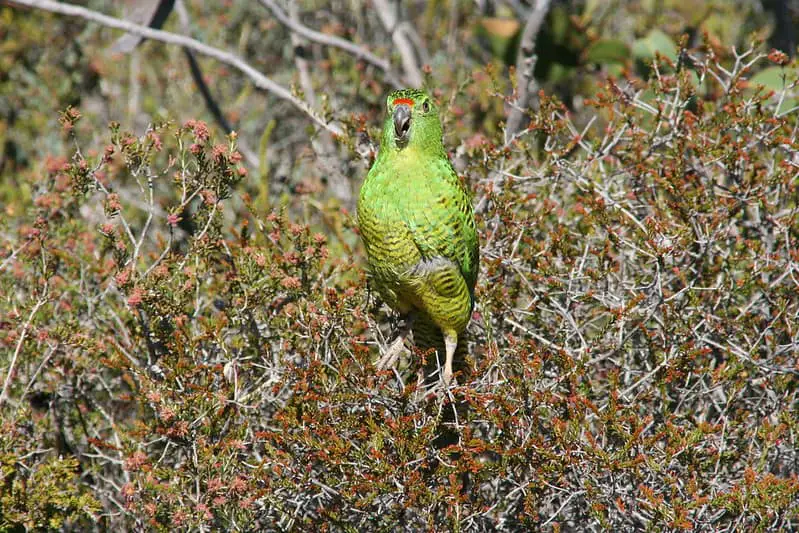
Other Names
The Western Ground Parrot is known as kyloring by the Noongar indigenous people of the southwest corner of Western Australia.
It’s Latin name is Pezoporus flaviventris.
Where To Find Them
If you are lucky enough to find this endangered species, you will find them in the southwest corner of Western Australia:

Where To Look For Them
Look for these parrots on or close to the ground. They feed on seeds, flowers, fruits, and leaves. They like heathlands with a diverse range of low-growing shrubs.
Western Ground Parrots tend to avoid areas that have been burnt and are more often found in places that have not been affected by fires for over 40 years.
What Do They Sound Like?
There were no xeno-canto recordings available for this bird.
Western Ground Parrot Facts/Anecdotes
The Western Ground Parrot is one of the world’s rarest birds with only around 150 individuals remaining.
7. Eclectus Parrot

Size
Around 35 cm (14 in.) in length.
Colour
Eclectus Parrots are one of the rare species of birds where the female is more brightly coloured than the male. They are so different in colour that they were once thought to be completely different species.
Females are a brilliant red that is darker on their backs and wings. They have a blue band across the back of their necks and blue edges to their wings. A violet-blue band extends across their bellies. Their tales are red, tipped with orange.
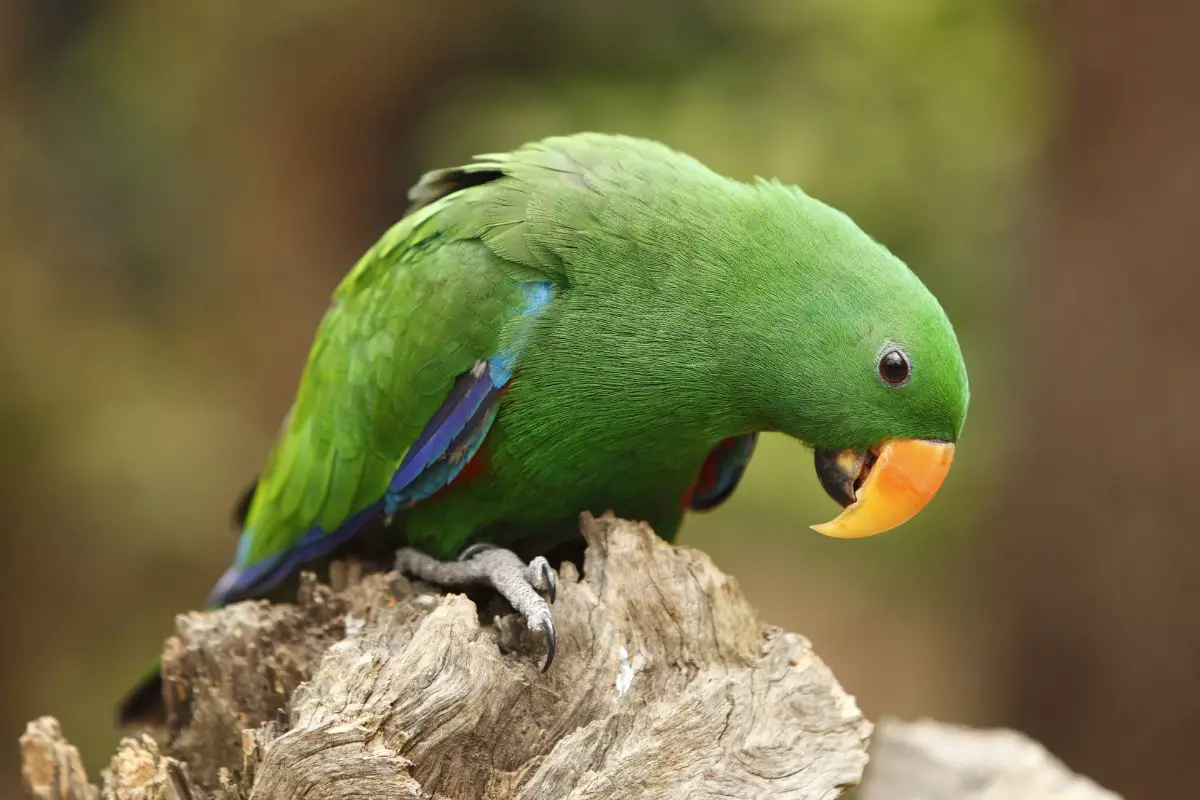
The above image shows the male Eclectus Parrot with its emerald green plumage. Males also have strips of blue on their wings and the underside of their wings and sides of their bellies are rich scarlet.
The male birds also have short square tails with green central feathers tipped with blue. The outer tail feathers are blue, tipped with white.
Other Names
These stunning birds are also known as the Red-sided Parrot or the Rocky River Parrot. Their Latin name is Eclectus roratus.
Where To Find Them
You will have to go far north if you want to see the Eclectus Parrot as they are found on the eastern Cape York Peninsula from Pascoe River south to Massey Creek.
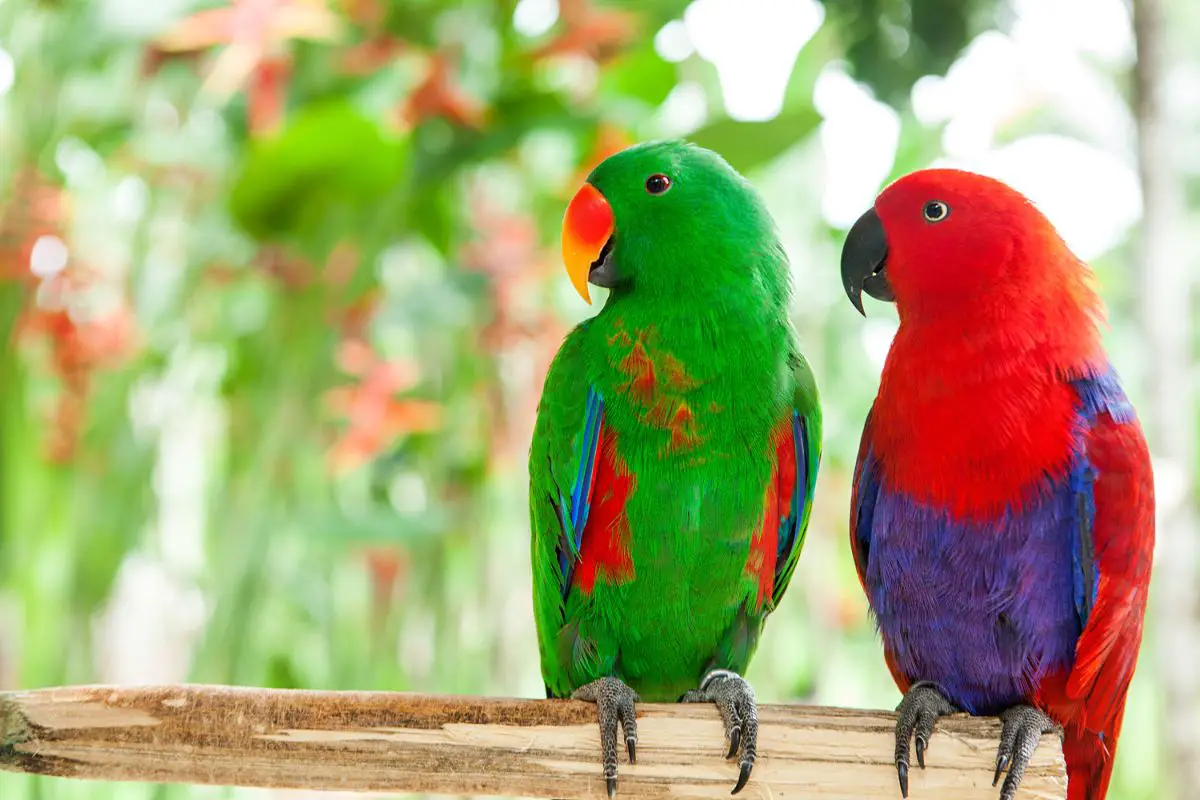
Explore some of Australia’s yellow birds in this article here on my blog.
Where To Look For Them
Check the rainforest canopy for these lovely birds and also in eucalypt woodlands next to rainforests. In the early morning, they feed on berries, seeds, nuts, fruit, and flowers.
What Do They Sound Like?
The calls of the Eclectus Parrot echo through the rainforests of northern Queensland:
Eclectus Parrot Facts/Anecdotes
The word Eclectus means “exhibiting the best of opposites” which is a perfect description of this birds sexual dimorphism (where both sexes are different in size, weight, colour, etc.).
8. Regent Parrot

Size
Regent Parrots are 37-42 cm (14.5-16.5 in.) in length.
Colour
Male Regent Parrots are mostly yellow with blue-black wings and tails. They have a patch of brilliant yellow on their shoulders and a red patch on their wings as well.
Females and juveniles are dull olive green with pinkish wing patches.

Other Names
The Regent Parrot has quite a few alternate names: Black-Tailed Parrot, Rock Pebbler, Rock Peplar, Murray Smoker, Marlock Parakeet, Yellow King Parrot, and Regent Parakeet.
Their Latin name is Polytelis anthopeplus.
Where To Find Them
Regent Parrots can be found in south-western New South Wales, north-western Victoria, and the Murray Mallee region of South Australia. They are however more numerous in the southwestern corner of Western Australia.
Where To Look For Them
In the east of the country, Regent Parrots like Red River Gum, flood plains, woodlands, and mallee regions. The western population can be found in open forests and woodlands and prefer Salmon Gum trees.
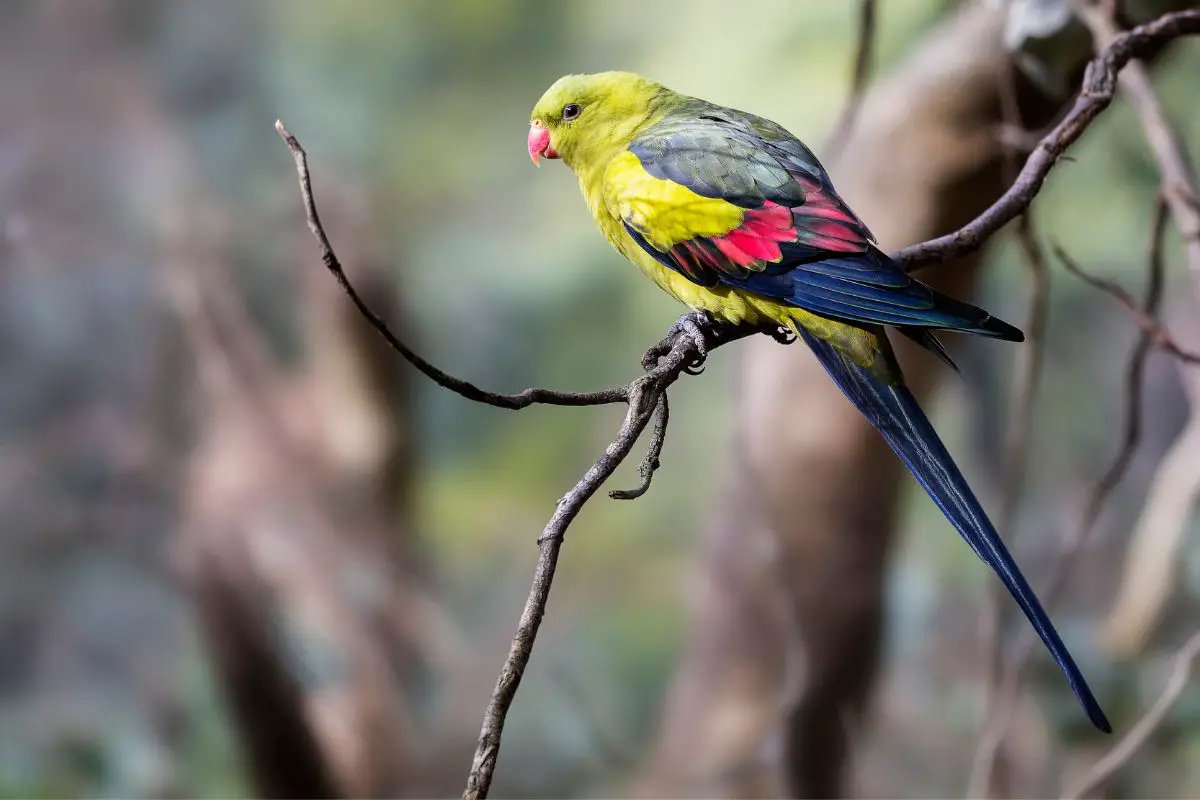
Look for them on the ground or in the canopy, searching for seeds of grasses and plants. They also enjoy eating cereal crops, especially wheat.
What Do They Sound Like?
Listen to the unique calls of the Regent Parrot below:
Regent Parrot Facts/Anecdotes
The Regent Parrot, along with the Princess Parrot and the Superb Parrot make up the genus Polytelis, based on an ancient Greek word meaning “magnificent” or “superb.”
9. Night Parrot
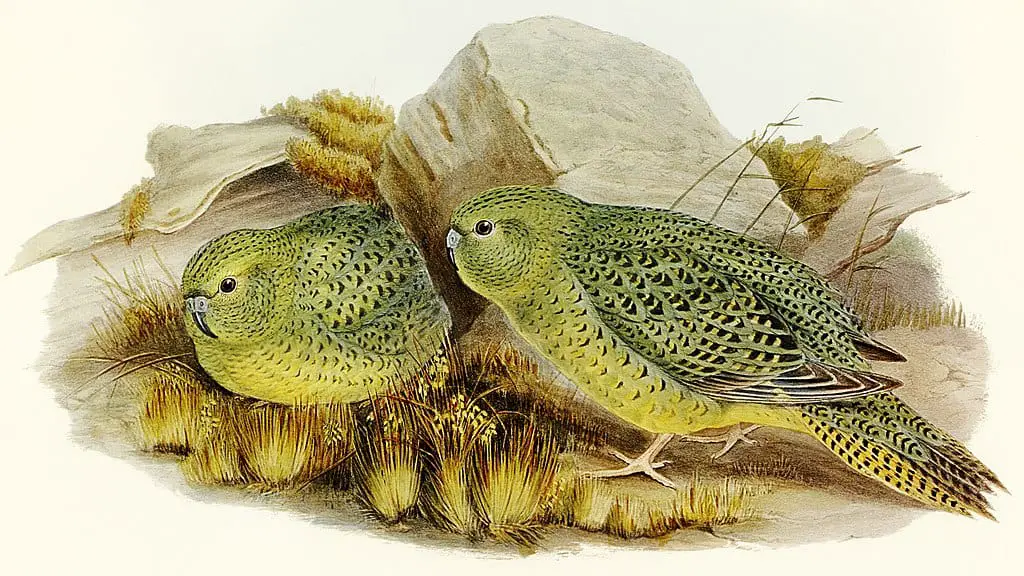
Size
The Night Parrot is 22-25 cm (8.7-9.8 in.) in length.
Colour
Night Parrots are similar in colour to the Eastern and Western Ground Parrot. They are green with yellow-and-black streaks, spots, and barring. Very few images of these birds exist as it’s so rare.
Other Names
Night Parrots have also been known as Porcupine Parrots, Nocturnal Ground Parakeets, Midnight Cockatoos, Solitaire, Spinifex Parrots, and Night Parakeets. Their Latin name is Pezoporus occidentalis.
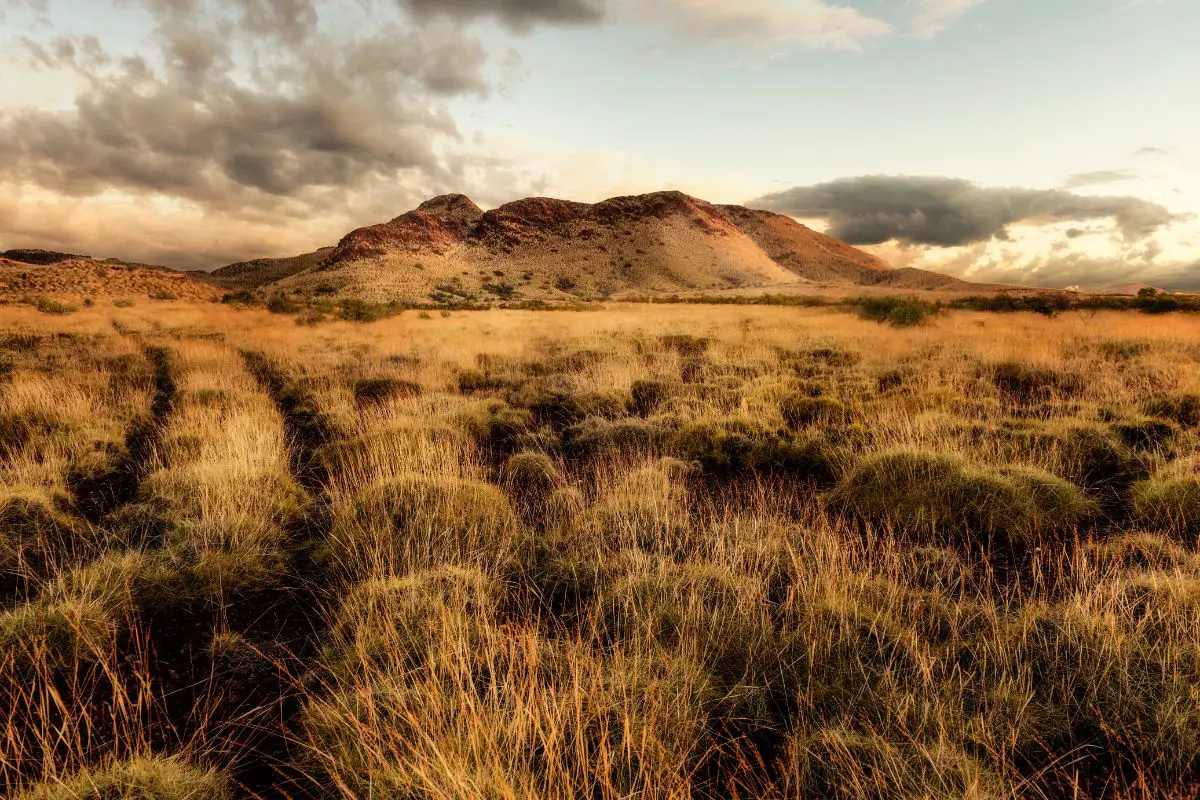
Where To Find Them
To be honest, you are extremely lucky if you do find one of these birds. There have only been a handful of recorded sightings of this bird in recent decades.
They have been recorded in western Queensland, north-eastern South Australia, and inland Western Australia.
Where To Look For Them
If you are trying to look for them, try arid or semi-arid grassland with lots of spinifexes. You may also find them in shrubland dominated by samphire, bluebush, and saltbush.

What Do They Sound Like?
Surprisingly, there are 7 recordings of the Night Parrot on xeno-canto. I’ve embedded one of them below:
To listen to the rest of the Night Parrot calls, visit this page on xeno-canto.
Night Parrot Facts/Anecdotes
The Night Parrot holds the title of one of the most mysterious and elusive birds in the world.
The last living specimen was collected in 1912. There are no confirmed records of the bird between 1912 and 1979.
Since 1979, there have been unconfirmed reports, and dead birds have been found in Queensland; one in 1990 and then one in 2006.
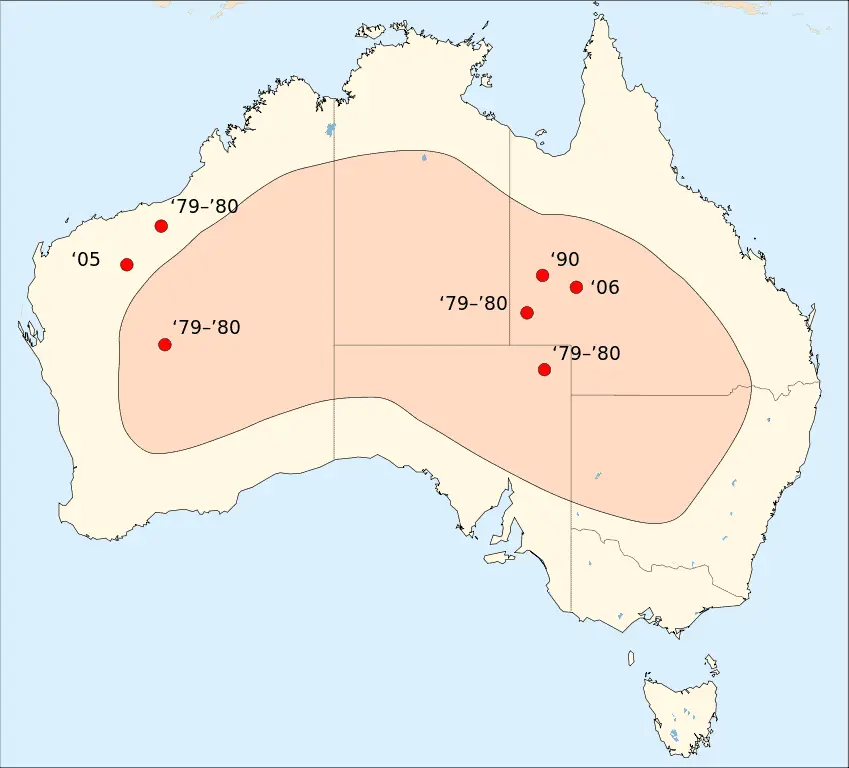
The last sighting of this enigmatic bird was in 2013 by John Young, a naturalist and wildlife photographer who was blessed to be able to take a few photos and a short video of a Night Parrot in western Queensland.
The interest in this sighting spread across the globe and was so intense that the exact location where John found the bird had to be kept secret.
References
- Bird Information – birdlife.org.au
- Barely any tree hollows are good enough for superb parrot nests – Craig Allen for ABC News
- Night Parrot – Bush Heritage Australia
- What Bird Is That? – Neville W. Cayley on Trove
- Bird call recordings – xeno-canto.org
- Parrots Of Australia – Terence Lindsey on Internet Archive
- Additional bird information – Wikipedia
